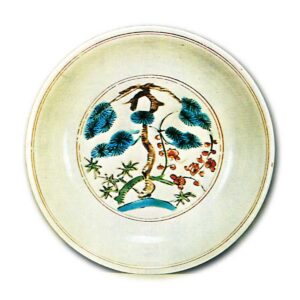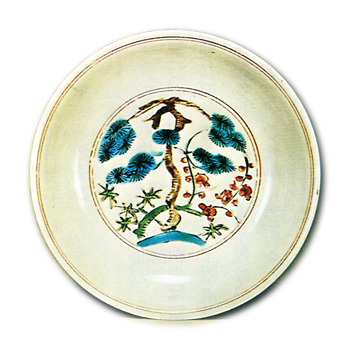
This term refers to the official kilns of Jingdezhen during the Hongji period (1488-1505) of the Ming dynasty in China. This kiln is characterized by its excellent yellow glaze, the best of which is said to resemble the yellow of narcissus or the petals of a yellow hollyhock. According to Buschel, this yellow glaze was probably made with iron, and was the precursor of the imperial colors that were forbidden in later periods. Most of the imperial colors are rice bowls or sake cup-shaped dishes with a six-character signature of Koji (弘治) in blue on the bottom. Some of them have no design at all, while others have underglaze engravings of five-clawed dragons and cloud forms. The few examples of Hiroyasu wares made in the Jidai period that appear in Daminghiro’s “Rekidai Meishi Porcelain Illustrated Catalogue” are almost all yellow glazed. In addition to the above, there is a slightly darker color, which is described as a yellow jade color, or yaki melon. One of the reasons why the Koji kilns emphasized yellow and paid little attention to the universal blue and white throughout the period is probably due to the fact that after the Seika period (1465-187), the supply of high-quality cobalt, sukudo erect blue, ran out and the stores of it were also nearly exhausted. (Ozaki Shunsheng)



